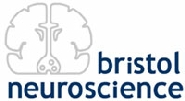Every week is Brain Awareness Week for Dr Anne Cooke who runs 'Bristol Neuroscience', a network set up by Bristol University to build bridges between all those in the neuroscientific community - both in the University and hospitals - so that research and clinical practice can be pursued at the highest possible level.
Bristol University has one of the largest concentrations of brain scientists in the UK. Alzheimer's and Parkinson's Disease, stroke, Multiple Sclerosis, depression and memory are but a few of the disorders being addressed by their research. All of these conditions have high incidence rates and major social implications, particularly for an ageing population, so it is crucial that research is done at the highest level.
Dr Anne Cooke is the driving force behind Bristol Neuroscience. A young researcher in neuroscience, she came to Bristol from Cambridge determined to make a difference: 'While I was working on my first degree in Cambridge my uncle died of Motor Neuron Disease. This was a pivotal event that led to my decision to pursue neuroscience and help reach a better understanding of such diseases. Although I was already playing a part in this as a researcher, I saw Bristol Neuroscience as a fantastic opportunity to make a real difference to neuroscience research.'
Her tremendous drive and energy is belied by her youth and unassuming presence, but by helping to strengthen the links between wide-ranging research interests and clinical expertise she has made sure that Bristol is now well placed to achieve major breakthroughs in neuroscience in the coming years.
Bristol Neuroscience was initiated by Bristol University early last year to tackle the disadvantages encountered by having departments spread all over the city. It also aims to encourage cross-talk and create opportunities for innovative research.
Only a year after its initiation, the huge success of Bristol Neuroscience has largely overcome any drawbacks of its widespread geographical locations, and neuroscience researchers around the city can make better use of the resources, expertise and facilities now more available to all.
Examples of the huge range of neuroscience research done at the University and around Bristol are as follows:
The mechanisms of pain and how the brain stem is involved in blood pressure regulation (Physiology Department)
How do humans perform 'foraging' tasks such as searching for a lost bunch of keys? What are the cognitive effects of caffeine, nicotine, and occupational stress? (Experimental Psychology Department)
The new Dorothy Hodgkin Building, open since July 2003, is home to a multi-disciplinary research centre where much of the research focuses on the central nervous system's response to stress (The Henry Wellcome Laboratories).
The molecular basis of learning and memory (MRC Centre of Synaptic Plasticity)
The occurrence and distribution of neurodegenerative diseases (Social Medicine Department)
Brain imaging - PET, SPECT, MRI and CT - in combination with molecular pharmacology, provides a powerful approach to investigate topics such as depression, drug addiction and sleep (Psychopharmacology Department)
The retina is an ideal model for neuroscientific research, being more readily accessible than the rest of the brain. The Ophthalmology Division takes advantage of these qualities to study stem cells in the eye (Bristol Eye Hospital).
Lack of oxygen around the time of birth can cause permanent brain damage and disability. An innovative cooling technique has been developed to protect the brain (Neonatal Neurology)
Haemorrhage in the brain is one of the most serious complications in babies born prematurely. A new approach - 'DRIFT' treatment - has substantially improved outcome in such babies and is now in advanced clinical trials (Neonatal Neurology)
At Frenchay Hospital, a confederation of fourteen research units co-ordinates clinical research into diseases such as Multiple sclerosis, Alzheimer's Disease and other dementias (Bristol Dementia Research Group and Institute of Clinical Neurosciences).
Pioneering neurosurgery of Parkinson's Disease is recognised worldwide. First patients to be treated continue to display a remarkable degree of recovery (Institute of Clinical Neurosciences)
Bionanotechnology examines how insects amplify specific frequencies of sound (School of Biological Sciences)
The biology of vision - establishing that birds can see UV light has led to an appreciation that birds perceive their surroundings very differently from humans (School of Biological Sciences)
